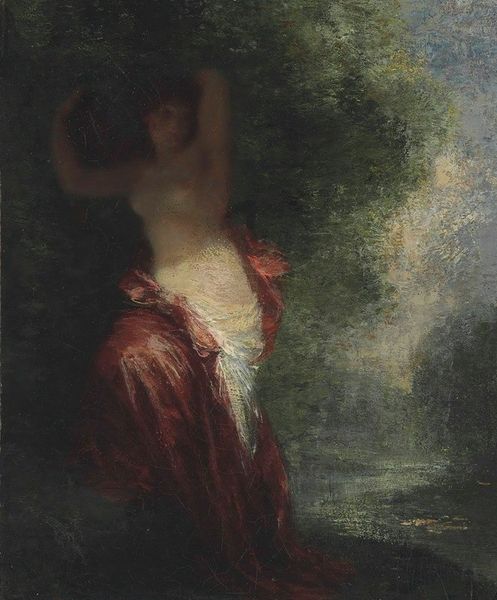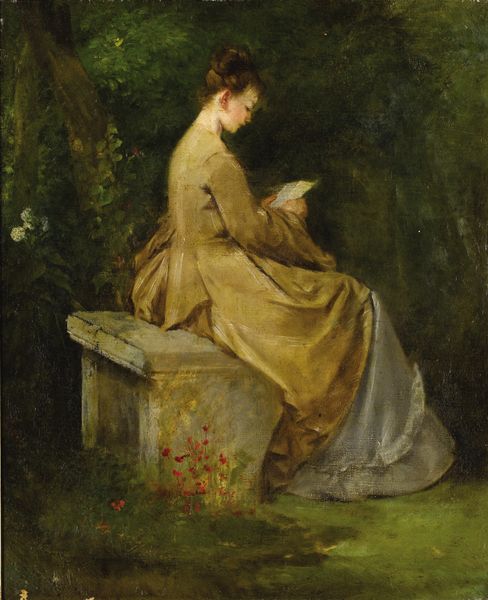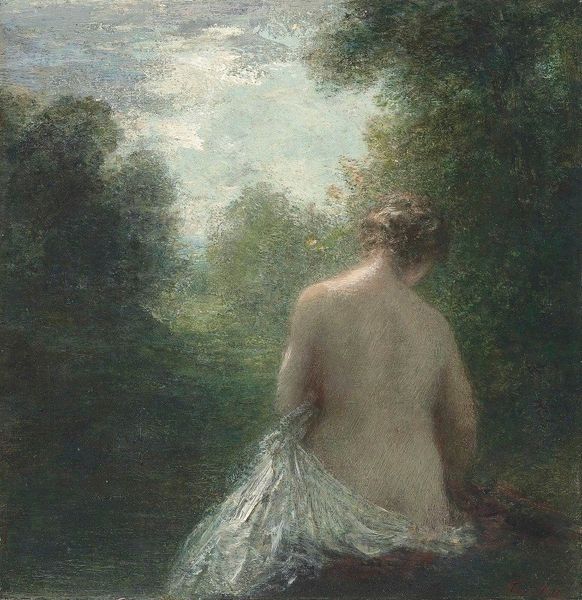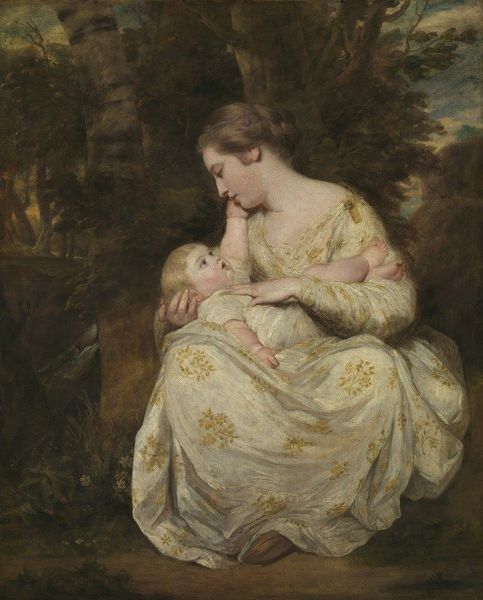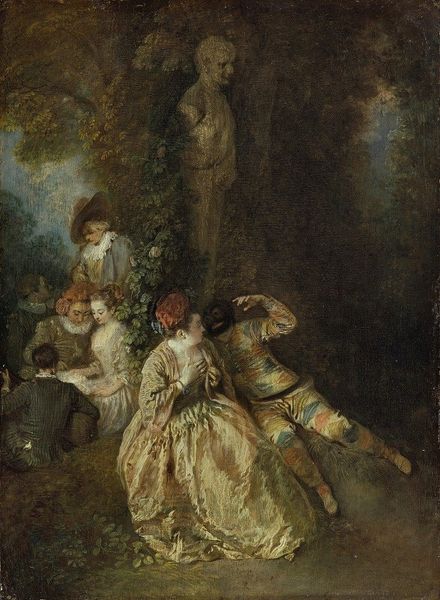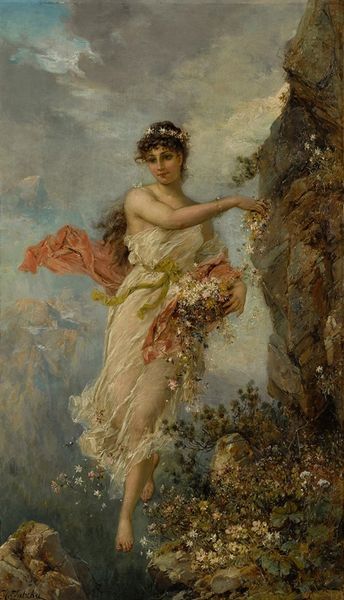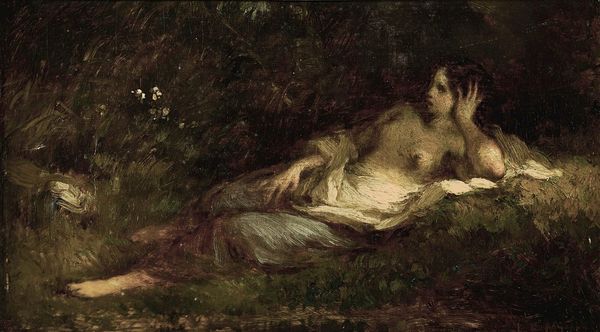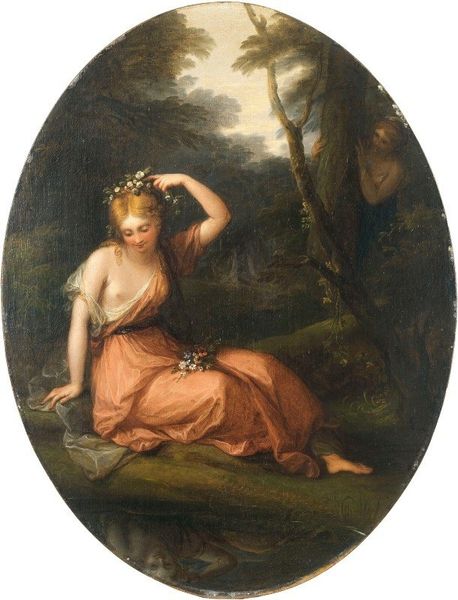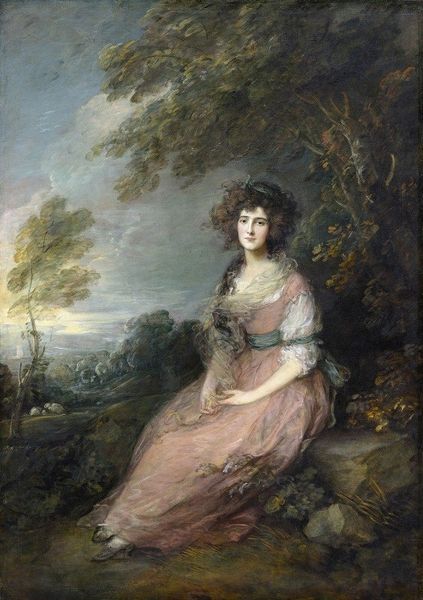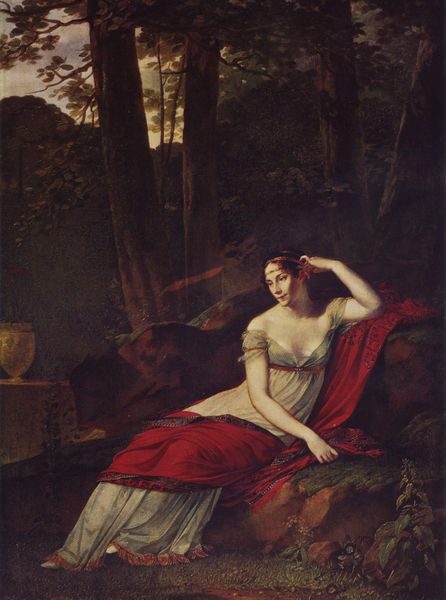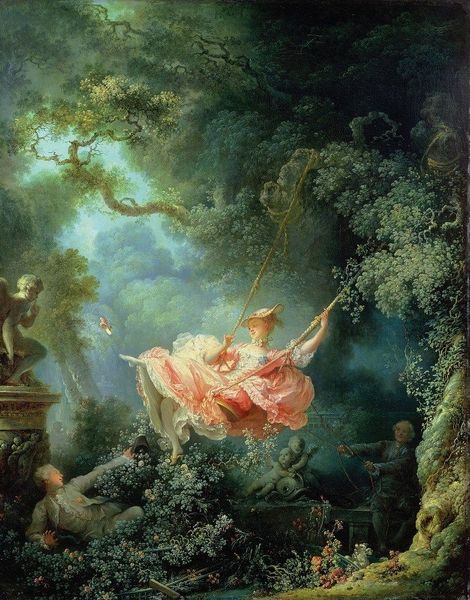
Copyright: Public Domain: Artvee
Editor: Here we have "Le chiffre d’amour", or "The Love Cipher", an oil painting made around 1775-1780 by Jean-Honoré Fragonard. It depicts a woman carving something into a tree while her dog sits nearby. What immediately strikes me is the intimacy of the scene, a seemingly private moment made public. How do you interpret this work? Curator: The painting offers a fascinating glimpse into the socio-cultural context of Rococo art and its evolving role within French society. The intimate, almost sentimental depiction of love here reflects the aristocratic tastes of the time, focusing on personal emotion and pleasure. Editor: Could you elaborate on that a bit? What kind of role did the painting play at that time? Curator: Fragonard’s work was a move towards emphasizing sentimental values that were gaining traction with the public. However, considering its likely patron, we should also consider the potential for playful eroticism. The act of carving a "love cipher" is simultaneously innocent and charged. The setting within nature creates an escapist fantasy, an important component of Rococo art's detachment from the harsh realities of the time. This connects directly to the ways elites used and controlled images to craft certain public perceptions. Editor: That’s interesting – I hadn’t considered the layers of public image manipulation. Curator: Precisely. Ask yourself, in what way does this curated depiction reflect a broader desire among the aristocracy to rebrand or soften its public image on the eve of major social and political upheavals? Editor: Thinking about the elites wanting to "soften" their images and how the painter responded definitely enhances how I perceive this work. It provides new layers. Curator: And understanding that helps us appreciate how art acts as a barometer of societal shifts, and to realize that paintings, even the prettiest ones, do political work.
Comments
No comments
Be the first to comment and join the conversation on the ultimate creative platform.
